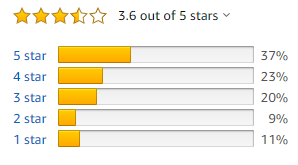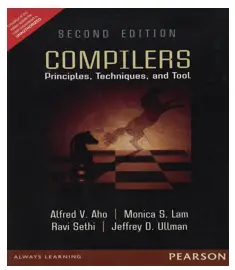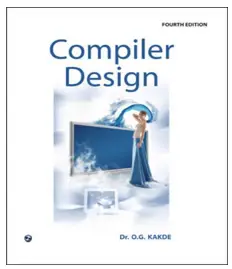Compilers Principles, Techniques & Tools By Aho, Sethi & Ullman
This article reviews the book “Compilers Principles, Techniques and Tools” by Alfred V. Aho, Ravi Sethi, D. Jeffrey Ullman and Monica S. Lam.
The article covers-
- Special features of book
- Analysis of Content
- Analysis of Exercises
- Necessary Instructions
- Conclusion
Why Should Be Read?
Special Features of Book-
The special features of this book are-
- It is the best book among the few available reference books for this subject.
- It covers much more than what is present in the GATE syllabus.
- It discusses the content in quite clear, simple and lucid style.
- It is suitable for beginners as well as intermediate students.
- It has sufficient number of exercise questions which are high in quality.
Analysis of Content-
The following table analyzes sections of the book that are relevant for GATE-
| Chapter No. | GATE Relevant Sections | GATE Topics Covered |
| 1 | All Sections | Introduction to Compilers |
| 2 | All Sections | Basics of Syntax Directed Translator |
| 3 | 3.1 to 3.5 | Lexical Analysis and Tokens |
| 4 | 4.1.1 | Introduction to Syntax Analysis |
| 4.1.2 | ||
| 4.2 | Context Free Grammars
(Overlaps with Theory of Computation Syllabus) |
|
| 4.3 | ||
| 4.4 | Top-Down Parsing | |
| 4.5 | Bottom-Up Parsing | |
| 4.6 to 4.9 | LR Parsing and Parser Generators | |
| 5 | All Sections | Syntax Directed Translation |
| 6 | 6.1 | Directed Acyclic Graphs |
| 6.2 | Three Address Code | |
| 6.6 | Control Flow and Backpatching | |
| 6.7 | ||
| 7 | 7.2 | Stack Allocation & Accessing Data on Stack |
| 7.3 | ||
| 7.4 | Heap Management |
Covering Only These Sections Is Enough
Analysis of Exercises-
The following table analyzes exercises of the book that are relevant for GATE-
| Chapter No. | Question No. |
| 1 | 1.6.1, 1.6.2, 1.6.3, 1.6.4 |
| 2 | 2.2.1 to 2.2.6, 2.3.1 to 2.3.5, 2.4.1, 2.6.1 to 2.6.3 |
| 3 | 3.1.1, 3.3.2, 3.3.3, 3.3.5, 3.3.6, 3.3.7, 3.3.9, 3.3.10 |
| 4 | 4.2.1 to 4.2.8, 4.3.1 to 4.3.3, 4.4.1, 4.4.3, 4.4.4, 4.4.5, 4.4.6, 4.4.7, 4.5.1 to 4.5.3, 4.6.1 to 4.6.7, 4.7.1 to 4.7.5, 4.8.1 |
| 5 | 5.1.1 to 5.1.3, 5.2.1 to 5.2.5, 5.3.1 to 5.3.3, 5.4.2 to 5.4.6, 5.5.1 to 5.5.5 |
| 6 | 6.1.1, 6.1.2, 6.2.1, 6.2.2, 6.2.3, 6.6.1, 6.6.3, 6.6.4, 6.6.5, 6.6.6, 6.7.1 to 6.7.3 |
| 7 | 7.2.1 to 7.2.5, 7.3.1, 7.3.2, 7.4.1 |
Practicing Only These Exercises Is Enough
Necessary Instructions-
Keep the following instructions in mind while reading the book-
- The book has nearly 1000 pages.
- So, be selective and read only the relevant sections from the book.
- If you follow the GATE syllabus, the number of pages reduces significantly.
- Target code generation and code optimization are no longer the part of syllabus.
- From the past 2-3 years, the weightage of this subject has reduced.
- In last previous years, there have been hardly one or two questions asked.
- So, prepare accordingly keeping in mind the weightage of this subject.
- The exercise questions of this book are at par with the level of questions asked in the GATE exam.
- Practicing exercise questions along with previous year questions is sufficient to perform excellent.
Conclusion-
- This textbook covers many more topics than those mentioned in the GATE syllabus.
- Reading in accordance with the above discussed sections ensure all the topics are covered.
- The exercise questions are excellent for practice while preparing for GATE.
- This book is a must read for students to understand how a compiler actually works.
| THIS BOOK IS SELF-SUFFICIENT FOR GATE EXAM. |

Amazon Rating
Student’s Reviews-







Other Recommended Books-
Compiler Design By O.G. Kakde-



